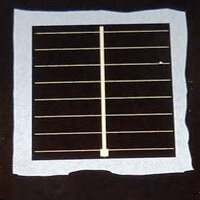News
A simple chemical treatment could replace expensive antireflective solar cell coatings, bringing down the cost of crystalline silicon panels. The treatment, a one-step dip in a chemical bath, creates a highly antireflective layer of black silicon on the surface of silicon wafers, and it would cost just pennies per watt, say researchers at the National Renewable Energy Laboratory (NREL). They've used it to create black silicon solar cells that match the efficiency of conventional silicon cells on the market.
Topics: Materials, Environment, Applied Physics
Cutting-edge science delivered direct to your inbox.
Join the Harvard SEAS mailing list.
Scientist Profiles
Eric Mazur
Balkanski Professor of Physics and Applied Physics




